In this comprehensive Pingyao travel guide, you’ll discover all the vital details regarding climate, must-visit attractions, and thrilling activities, ensuring your trip to China is nothing short of perfection. By following this guide, you’ll be fully equipped for an exceptional and memorable journey!
General Information
Pingyao stands as an exemplary ancient city in China, boasting remarkable preservation. Situated in the northern region of Shanxi Province, it once flourished as a significant trading hub. Presently, Pingyao predominantly showcases traditional residences, rather than natural landscapes. Visitors have the opportunity to immerse themselves in the essence of Ming and Qing architectural styles, marveling at the city’s rich historical and cultural structures. Despite its modest dimensions, Pingyao is blessed with a plethora of captivating buildings and a diverse culinary scene that can enchant any traveler. Nowadays, Pingyao has solidified its status as a sought-after destination among tourists in Northern China.
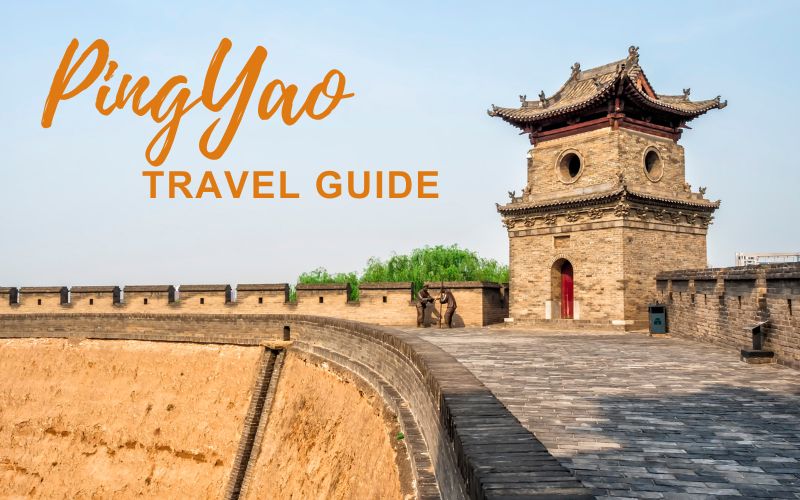
Pingyao travel guide
Climate & Best Time to Visit Pingyao
Pingyao falls within the temperate monsoon climate zone, characterized by four distinct seasons.
- Spring (From March to May): Spring in Pingyao is mild and pleasant. Temperatures gradually rise from around 10°C (50°F) in March to 20°C (68°F) in May. It is a good time to visit if you prefer moderate temperatures and blooming scenery.
- Summer (From June to August): Summer in Pingyao is warm and humid. Average temperatures range from 20°C to 30°C (68°F to 86°F), with occasional heatwaves pushing temperatures higher. Be prepared for some rainfall during this season.
- Autumn (From September to November): Autumn is another favorable season to visit Pingyao. The weather becomes cooler, with temperatures ranging from 10°C to 20°C (50°F to 68°F). The foliage turns vibrant shades of red and gold, creating a picturesque atmosphere.
- Winter (From December to February): Winter in Pingyao is cold and dry. Temperatures hover around -10°C to 3°C (14°F to 37°F), and occasional snowfall is possible. It is essential to bundle up and pack warm clothing if visiting during this time.
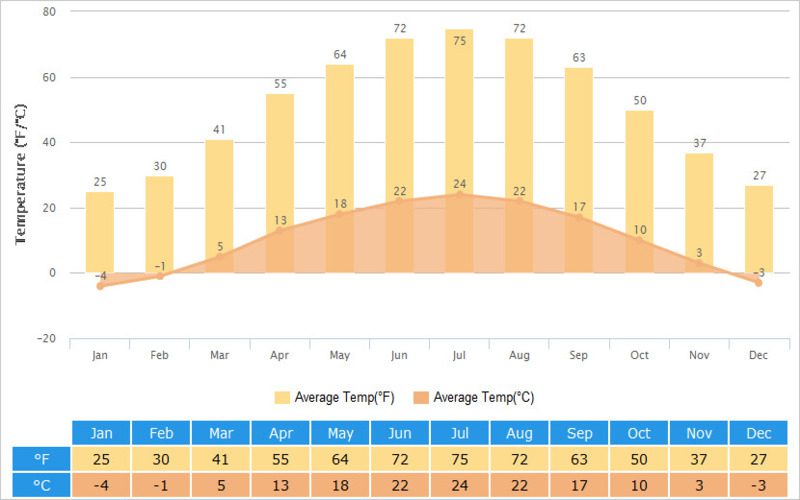
The climate of Pingyao
Pingyao is most delightful to explore during the springtime, spanning from March to May, as well as the autumn season, which embraces the months of September through November. These periods offer mild and pleasant weather, making it comfortable for exploring the city and its attractions. During these seasons, you can also avoid the peak tourist crowds that often visit during the summer months.
Getting to Pingyao
By plane
Pingyao is conveniently accessible via Taiyuan Wusu International Airport (TYN), which is the nearest major airport situated around 100 kilometers (62 miles) away. Upon arrival at the airport, you have the option to take a taxi or pre-arrange a private transfer to comfortably reach Pingyao.

Taiyuan Wusu International Airport (TYN)
By train
Pingyao has its own railway station, Pingyao Railway Station, which is well-connected to major cities in China. High-speed trains and regular trains operate to and from Pingyao. You can check the train schedules and book tickets in advance through official Chinese railway websites or through travel agencies.
By bus
Pingyao enjoys connectivity through long-distance buses, linking it to various cities across China. Bus services are available from nearby cities such as Taiyuan, Beijing, Xian, and others. To ensure a smooth journey, it is recommended to check the bus schedules in advance and book tickets either at the local bus stations or through trustworthy travel agencies.
By private car or taxi
For those seeking enhanced flexibility and convenience, opting for a private car or taxi to reach Pingyao is highly recommended. This transportation choice grants you the freedom to personalize your itinerary and relish a comfortable journey. It is advisable to negotiate the price with the driver or opt for a reliable taxi service to ensure a smooth and satisfactory experience.
Getting around Pingyao
Walking
The ancient city of Pingyao is compact and pedestrian-friendly. Many of the main attractions, such as the ancient city walls, historic streets, and architectural sites, are within walking distance of each other. Exploring Pingyao on foot allows you to immerse yourself in the charming atmosphere and discover hidden gems.
Bicycle
Exploring Pingyao by renting a bicycle is a highly favored choice among visitors. Within the city, you’ll find bike rental shops offering a range of bicycle options to suit your preferences. Cycling not only enables you to efficiently cover more ground but also provides a distinctive and immersive experience, allowing you to fully appreciate the city’s sights and surroundings.
Electric Vehicles
Within the confines of the ancient city walls, you’ll find an array of electric vehicles, including mini electric buses and tricycles, that provide transportation services. These electric vehicles serve as a convenient option, particularly for individuals with limited mobility or for traversing longer distances within the city. Their availability ensures a hassle-free and comfortable means of getting around Pingyao’s historic precinct.
Taxi
In Pingyao, taxis are readily accessible and can be hailed at designated taxi stands or booked through mobile applications. When taking a taxi, it is advisable to have your destination written in Chinese characters or present a map to the driver, as English proficiency among taxi drivers may be limited. This will help ensure clear communication and a smoother journey to your desired location.
Accommodation in Pingyao
The cost of accommodation in Pingyao can vary depending on the type of lodging you choose and the level of comfort and amenities provided. Generally, there is a range of options available, including budget hostels, mid-range hotels, boutique guesthouses, and luxury accommodations.
- Budget hostels in Pingyao can cost around $10 to $30 per night, offering basic facilities and shared accommodations. Mid-range hotels typically range from $30 to $80 per night, providing more comfortable rooms with private bathrooms and additional amenities such as Wi-Fi and breakfast.
- Boutique guesthouses in Pingyao often offer a unique and charming experience, with prices ranging from $80 to $150 per night. These accommodations usually feature traditional architecture and decor, along with personalized services.
- For those seeking luxury and high-end accommodations, prices can start from $150 per night and go upwards, depending on the hotel or resort. These establishments often offer spacious rooms, premium facilities, on-site restaurants, spas, and other exclusive services.
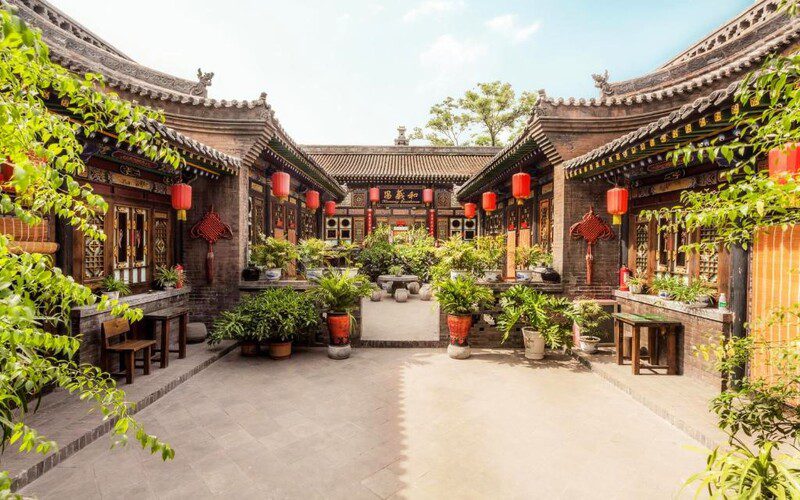
Pingyao Harmony Hotel
Best Places to Visit in Pingyao
Pingyao Ancient City Wall
The construction of the ancient City Wall dates back to 827 BC, during the reign of King Xuan of Zhou. However, it was reconstructed during the Ming Dynasty in 1370 to fortify the country against Eastern Mongolian enemies. Despite undergoing several restoration projects, the wall has retained its integrity and stands today as a symbol of Pingyao.
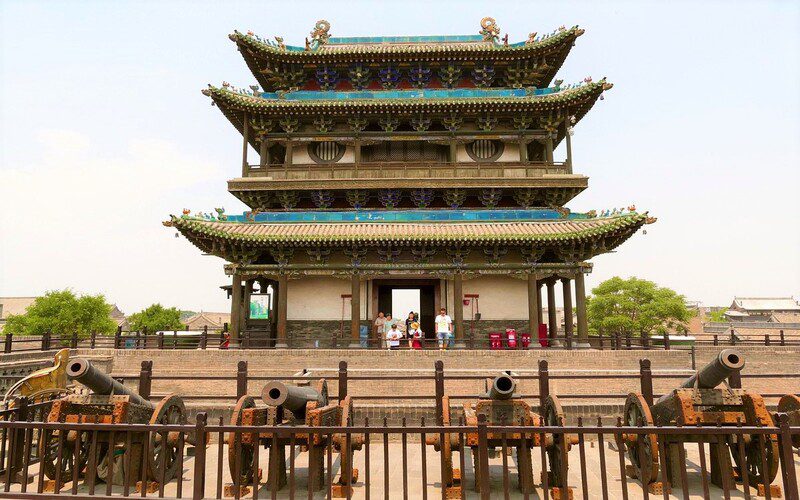
Pingyao Ancient City Wall
Stretching across a length of 6 kilometers, the wall reaches a height of 12 meters and varies in width from 3 to 6 meters. Its construction solely relies on bricks and stones. The wall encompasses six gates: one on the northern and southern sides, and two each on the eastern and western sides. Within these gates, a total of 72 watchtowers provide panoramic views, allowing visitors to marvel at the grandeur of this architectural masterpiece from a bird’s-eye perspective.
Ming Qing Street
Nestled in the heart of Pingyao, Ming Qing Street holds a significant historical legacy. During the Ming and Qing dynasties, it thrived as a bustling and vibrant trading street. This lively thoroughfare was a gathering place for Jin (Shanxi) merchants, who constructed numerous mansions and residences along its stretch. The prosperity of Ming-Qing Street earned it the reputation of being an “ancient Wall Street of China”.
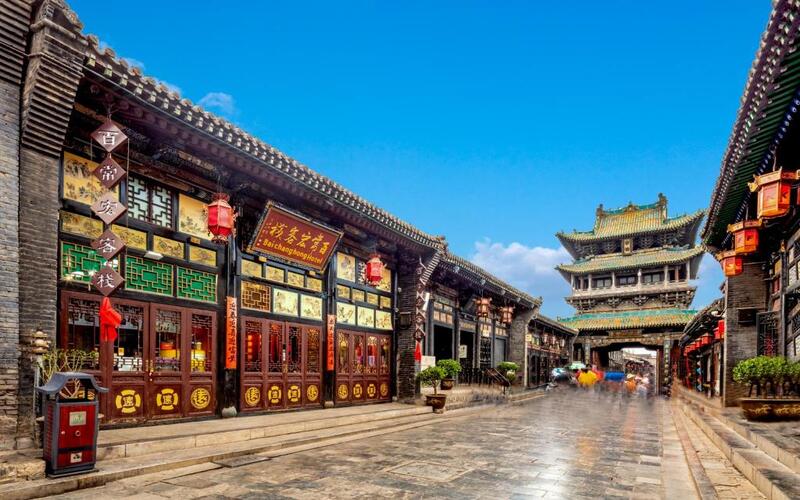
Ming Qing Street
Spanning 750 meters in length, this street once housed 700 shops selling a diverse range of goods, including Chinese tea, paintings, furniture, jade ware, and clothing. Remarkably, these shops have preserved their original appearance, contributing to the timeless charm of Pingyao Ancient City. Additionally, don’t forget to savor the flavors of Shanxi cuisine at the various restaurants dotted along Ming-Qing Street.
Wang Family Compound
Situated 35 kilometers southwest of Pingyao, the Wang Family Compound stands as a testament to the Qing Dynasty’s architectural grandeur, with a history spanning around 200 years. Originally belonging to the Wang family, they transitioned from humble beginnings as bean curd sellers to prosperous figures in business and politics.
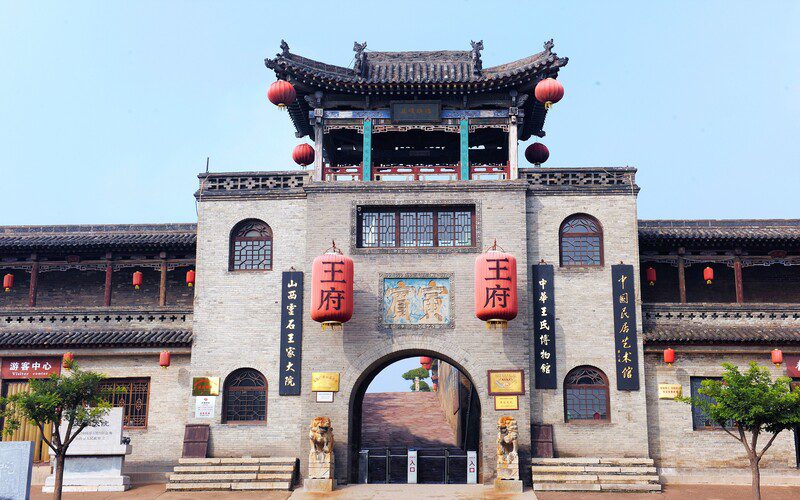
Wang Family Compound
Encompassing a vast area of 150,000 square meters, the Wang Family Compound is the second-largest private residence in China. It boasts 231 courtyards and 2,078 houses, showcasing the family’s luxury. Beyond its sheer size, the compound captivates visitors with its intricate traditional architectural style. This architectural masterpiece includes five alleys, five forts, and four gates. Inside, you’ll discover a wealth of exquisite furnishings, intricate carvings, and captivating sculptures, all meticulously displayed for visitors to admire.
Qiao Family Compound
Located 40 kilometers northeast of Pingyao, the Qiao Family Compound was once the esteemed private residence of Qiao Zhiyong, the most distinguished member of the influential Qiao Family. Spanning an area of 9,000 square meters, this compound boasts six expansive courtyards, twenty smaller courtyards, and over 300 rooms.
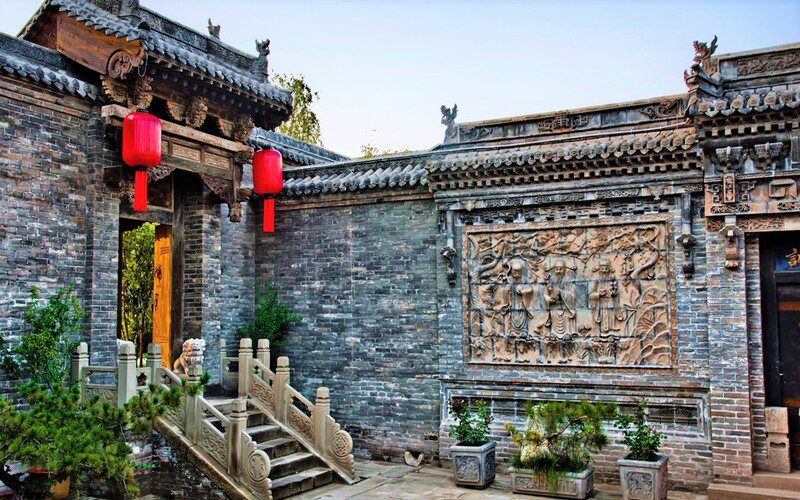
Qiao Family Compound
The vast compound is divided into five distinct sections: Zai Zhong Tang, De Xing Tang, Ning Shou Tang, Bao Yuan Tang, and a beautiful garden. In addition to its architectural marvels, the Qiao Family Compound serves as a captivating folk museum, housing over 2,000 precious cultural relics, including Chinese jade ware, paintings, and calligraphies.
Shuanglin Temple
Renowned as Zhongdu Temple in the past, Shuanglin Temple stands as a prominent Buddhist structure in Pingyao. With a history spanning over 400 years, this temple holds a rich cultural heritage. Its significance is acknowledged by its designation as a UNESCO Heritage Site in 1997.
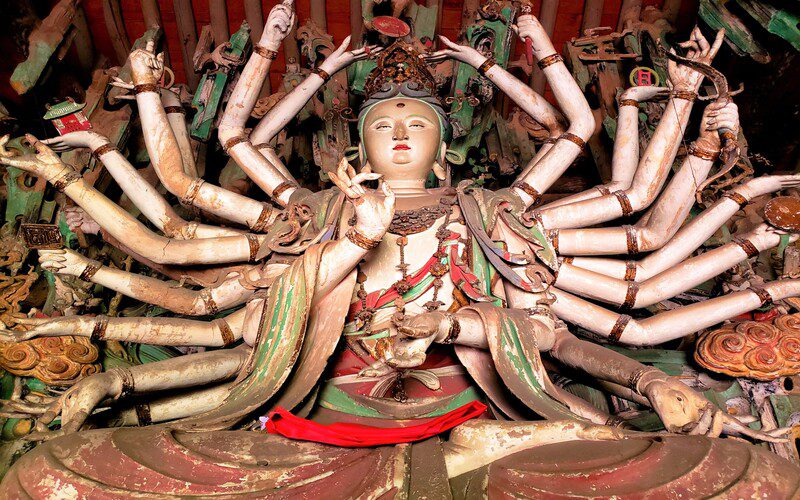
One-thousand-hands Avalokitesvara sculpture in Shuanglin Temple
Within the temple’s sacred grounds, over 2,000 sculptures can be found, each holding its own artistic and historical value. Among these sculptures, the centerpiece is the awe-inspiring and intricately crafted One-thousand-hands Avalokitesvara sculpture, notable for its exquisite detail and lifelike representation.
Confucius Temple
Located within the ancient city walls, Confucius temple offers a serene and contemplative atmosphere for visitors. The temple complex features traditional Chinese architectural elements, including majestic gates, ornate buildings, and beautiful gardens. As you explore the grounds, you’ll encounter various halls, pavilions, and courtyards that are intricately adorned with intricate carvings and decorative motifs. Inside the temple, you can find statues of Confucius, as well as other important figures from Confucianism, offering a glimpse into the teachings and philosophy of Confucius.
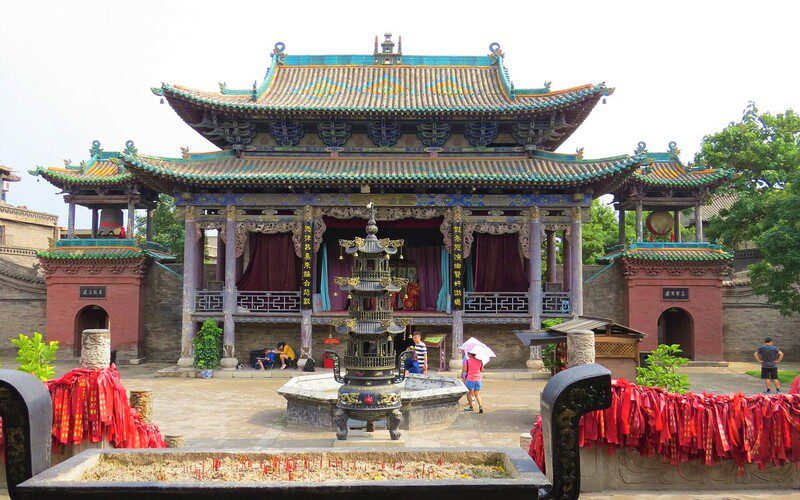
Confucius Temple in Pingyao
Ri Sheng Chang Museum
The Ri Sheng Chang Museum in Pingyao is a fascinating cultural attraction that sheds light on the historical significance of banking and finance in China. It is housed in the former Ri Sheng Chang Exchange Shop, which was the first draft bank established in the country.
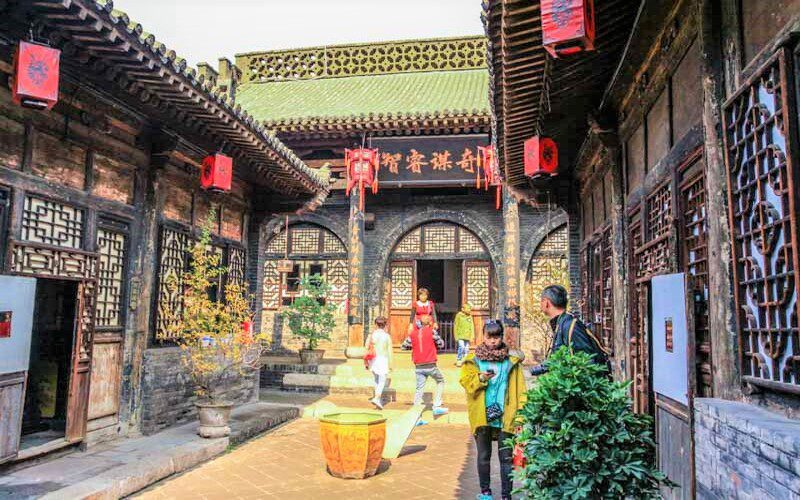
Ri Sheng Chang Museum
As you step into the museum, you’ll be transported back in time to the bustling era of the Ming and Qing dynasties. The museum showcases the evolution of banking practices and the role of Ri Sheng Chang in shaping China’s financial landscape.
Must-try Foods in Pingyao
Pingyao is renowned for its wide variety of wheat-based delicacies, which are the pride of Shanxi province. With over 100 types of noodles and bread on offer, this place is a haven for food enthusiasts. The streets and restaurants are brimming with vendors serving hand-pulled noodles, adding to the local culinary experience. Additionally, Pingyao is famous for its delectable beef jerky, bean curd jelly, long yam, and qiaomian kaolaolao. One cannot afford to miss the tantalizing beef dishes that have gained fame since the Ming dynasty. While high-end restaurants are scarce in this city, the homely and authentic flavors will leave you satisfied.
Steamed Oat Noodles with Gravy
In Pingyao, one must not miss trying the delightful dish known as Steamed Oat Noodles with Gravy. This local specialty features steamed oat noodles generously coated with a flavorful gravy. The combination of tender noodles and savory gravy creates a delicious and satisfying culinary experience. When visiting Pingyao, be sure to indulge in this unique and mouthwatering delicacy.
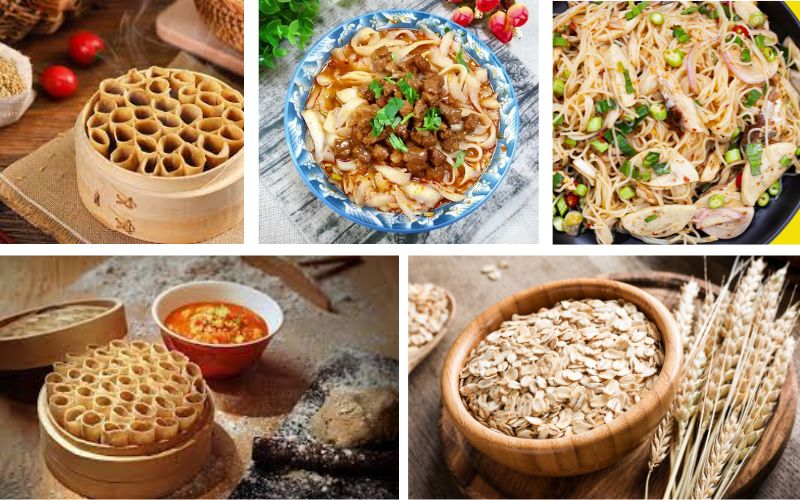
Steamed Oat Noodles with Gravy
Beef Jerky
Beef jerky is one of the local specialties of this city. For the finest beef jerky, take a leisurely stroll along Ming Qing Street and visit one of the street vendors. This delectable treat has a rich history that dates back to the Han Dynasty and gained widespread popularity during the Ming Dynasty (1368-1644).
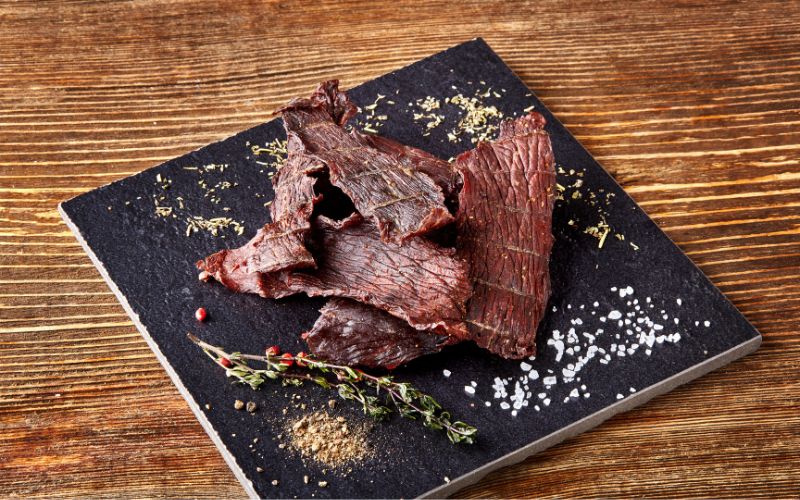
Beef jerky
When it comes to seasoning, only high-quality beef and a small amount of salt are needed to create the perfect beef jerky. The beef is carefully preserved with a special local salt for a period ranging from one to three months, after which it is slow-cooked for half a day. The result is fresh and succulent jerky with an enticing aroma. Among the most reputable brands is Guanyun Beef, whose products can be found in souvenir stores and supermarkets.
Yellow Wine
Yellow sticky rice, combined with yeast, is the primary ingredient used in crafting this wine. Unlike other local alcohols, its flavor is relatively mild. If you’re seeking high-quality yellow rice wine, look no further than Changshengyuan Restaurant, a renowned establishment frequented by enthusiasts in search of exceptional brews.
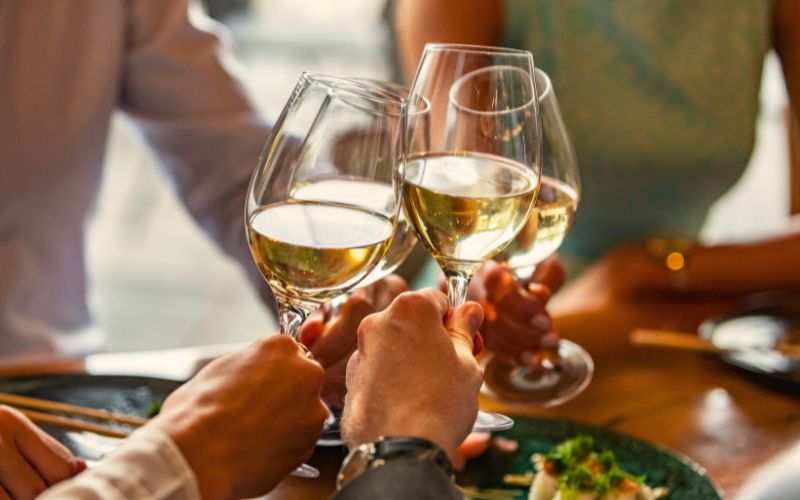
Yellow Wine
Bean Curd Jelly
Bean curd jelly is an affordable local snack crafted from exceptionally soft tofu. The process is straightforward, as the tofu is combined with a special sauce featuring noodles, soy sauce, and various complementary ingredients. The resulting bean curd jelly boasts a light and delicate flavor, making it a delightful dessert choice for a refreshing treat.
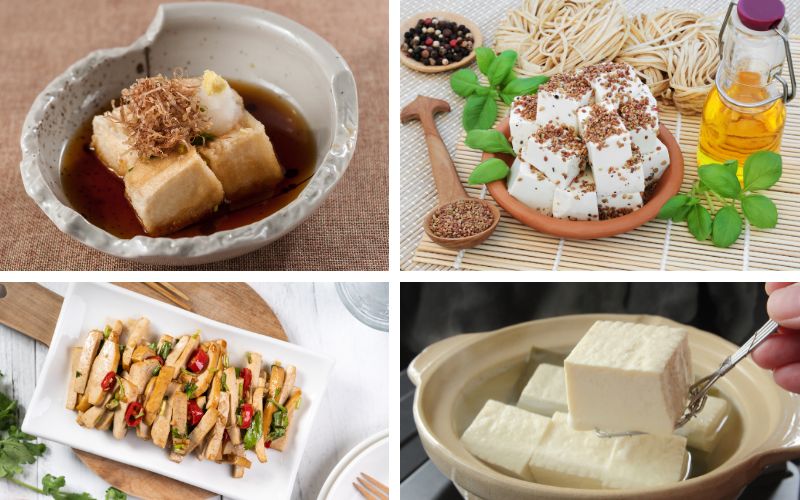
Bean curd jelly
With its captivating blend of rich history, impeccably preserved architecture, and cultural significance, Pingyao enthralls those who have a keen interest in Chinese heritage and traditional culture. The city’s allure lies in its ability to transport visitors back in time, allowing them to immerse themselves in the beauty and legacy of ancient China. If you plan to visit Pingyao, please feel free to contact us for any additional information or assistance. We are here to provide you with the necessary details to make your trip to Pingyao a memorable one.